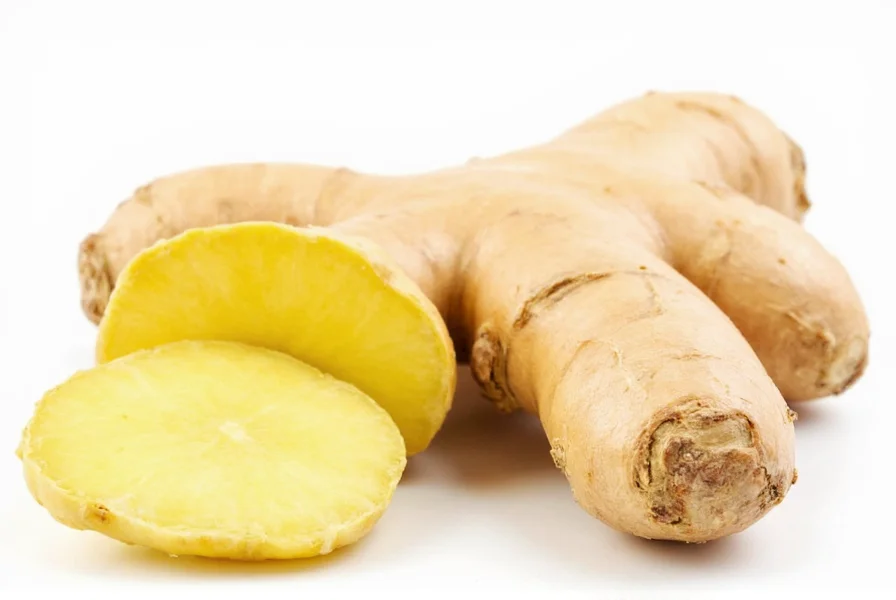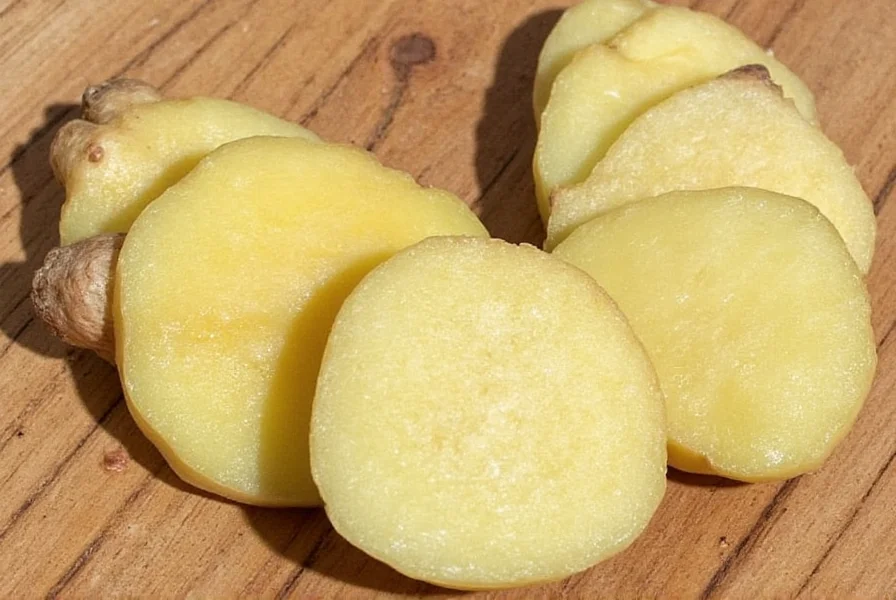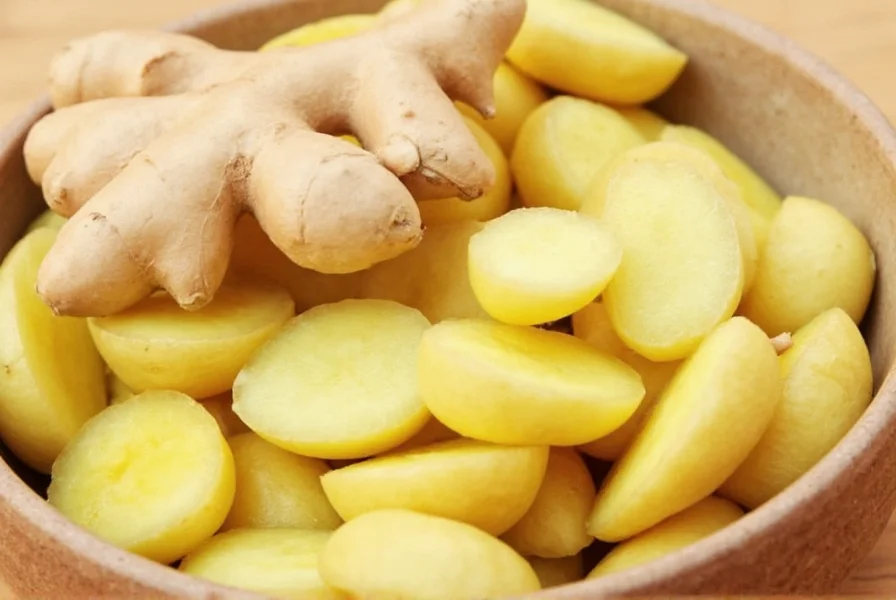Understanding how to properly use fresh ginger root transforms your culinary creations and wellness routines. This versatile rhizome offers a bright, spicy flavor and numerous health benefits when prepared correctly. Unlike powdered ginger, fresh ginger contains gingerol, the compound responsible for its distinctive zing and therapeutic properties.
Selecting Quality Fresh Ginger
Choose ginger roots that feel firm and heavy for their size with smooth, taut skin. Avoid specimens with wrinkles, soft spots, or visible mold. The best ginger has a spicy, citrusy aroma when scratched. Larger knobs provide more usable flesh, while smaller 'hands' often indicate younger, more tender ginger.
| Ginger Quality Indicator | What to Look For | What to Avoid |
|---|---|---|
| Texture | Firm, solid feel with no soft spots | Mushy areas or excessive flexibility |
| Appearance | Smooth, taut skin with minimal wrinkles | Deep wrinkles, shriveling, or mold |
| Aroma | Sharp, citrusy scent when scratched | Musty or fermented smell |
Proper Storage Techniques
Store unpeeled ginger in the refrigerator's crisper drawer inside a paper bag or wrapped in a paper towel inside a plastic container. This method maintains humidity control while preventing excess moisture. For longer storage, place ginger in a jar covered with sherry or vodka, which preserves flavor while preventing mold.

Preparation Methods
Peel ginger using the edge of a spoon, which glides between the skin and flesh without removing excess material. For recipes where appearance matters, use a vegetable peeler. When time is limited, scrub ginger thoroughly and leave the skin on, as it contains valuable nutrients.
Master these three essential preparation techniques:
- Grating: Use a microplane for fine, fluffy ginger that incorporates easily into sauces and dressings
- Slicing: Cut paper-thin rounds for tea infusions or stir-fries using a sharp chef's knife
- Minced: Create small, uniform pieces by first slicing thinly, then rocking your knife through the slices
Practical Applications in Cooking
Fresh ginger enhances both sweet and savory dishes. Add it early in cooking for milder flavor or toward the end for brighter notes. In Asian cuisine, ginger often joins garlic and scallions as an aromatic base. For baking, substitute 1 tablespoon fresh grated ginger for 1 teaspoon ground ginger.
Try these specific applications:
- Add grated ginger to morning smoothies for digestive benefits
- Infuse sliced ginger in hot water for 10 minutes to make soothing tea
- Marinate proteins with ginger, garlic, and citrus for tenderizing effects
- Stir minced ginger into oatmeal or yogurt for added zing
Measurement Conversion Guide
Understanding ginger measurements prevents recipe failures. One inch of average ginger knob yields approximately one tablespoon grated. When substituting between forms:
- 1 inch fresh ginger = 1 tablespoon grated ginger = 1 teaspoon ground ginger
- Fresh ginger contains more moisture, so reduce other liquids slightly when substituting for dried
- Candied ginger requires different measurements due to sugar content
Common Preparation Mistakes
Avoid these frequent errors when working with fresh ginger:
- Using a box grater instead of microplane (creates stringy, uneven pieces)
- Adding ginger too early in cooking (diminishes bright flavor)
- Peeling with a knife (removes too much valuable flesh)
- Storing at room temperature (causes rapid drying and mold)
Preservation Methods
Freeze whole ginger knobs without peeling for easy use. When needed, grate frozen ginger directly into dishes—the skin separates during grating. Alternatively, slice ginger thinly and freeze in single layers on parchment paper before transferring to freezer bags. For ready-to-use ginger, puree with a small amount of water and freeze in ice cube trays.

Health Considerations
Fresh ginger offers anti-inflammatory and digestive benefits, but consult your healthcare provider before using medicinally if you take blood thinners or have gallstone issues. The recommended daily intake for general wellness is 1-3 grams of fresh ginger (about 1-2 inches). For nausea relief, studies show effectiveness with 1 gram taken before potential symptoms.
Frequently Asked Questions
Can you eat ginger skin?
Yes, ginger skin is edible and contains beneficial nutrients. When ginger is young and the skin is thin, simply scrub it thoroughly instead of peeling. Older ginger with thicker, papery skin may have a slightly woody texture that some prefer to remove.
How much fresh ginger equals ground ginger?
One tablespoon of freshly grated ginger equals one teaspoon of ground ginger. When substituting fresh for ground in recipes, use three times the amount of fresh ginger, and consider reducing other liquids slightly due to fresh ginger's moisture content.
Why does my ginger taste bitter?
Ginger becomes bitter when overcooked or burned. To prevent bitterness, add ginger toward the end of cooking for stronger flavor impact. Avoid cooking ginger in extremely high heat without liquid, and never let it brown excessively in oil before adding other ingredients.
Can you freeze fresh ginger?
Yes, freezing is one of the best preservation methods for fresh ginger. Freeze whole knobs without peeling, then grate directly from frozen when needed. The skin separates during grating. Frozen ginger maintains quality for up to six months and actually becomes easier to grate when frozen.
How do you make ginger tea with fresh root?
To make ginger tea, slice 1-2 inches of fresh ginger thinly and add to 2 cups of boiling water. Simmer for 10-15 minutes (longer for stronger tea), then strain. Add lemon and honey to taste. For enhanced benefits, include the ginger peel which contains additional beneficial compounds.











 浙公网安备
33010002000092号
浙公网安备
33010002000092号 浙B2-20120091-4
浙B2-20120091-4